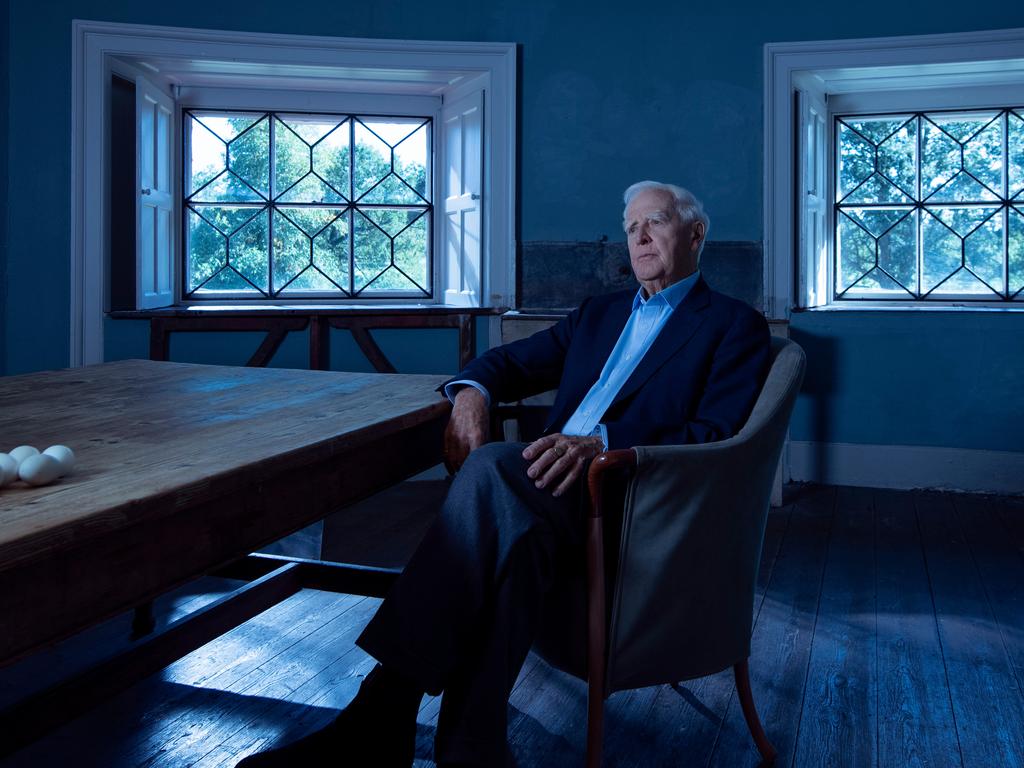A wonderfully macabre spin on Edgar Allan Poe
Netflix’s The Fall Of The House of Usher is a baroque, gothic melodrama full of literary allusions, writes Graham Blundell
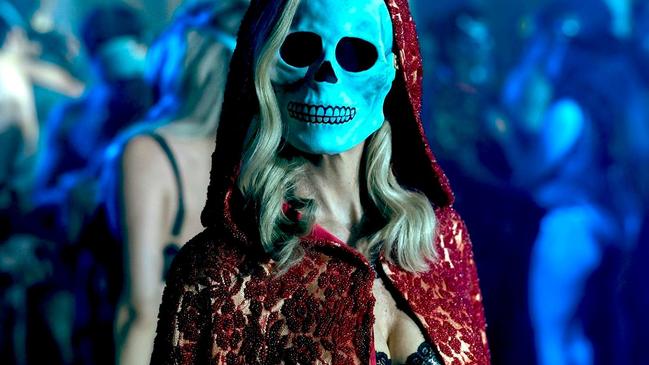
Before Mike Flanagan’s The Fall Of The House Of Usher arrived, I had only seen some of his earlier horror series, including the adaptation of Shirley Jackson’s 1959 novel The Haunting of Hill House. It remains for many the gold standard of haunted house stories, an American novel loaded, to quote one fan, “with so much psychological dread that it seeps its way into your bones and makes your blood run cold”.
The story of a group of folks who decide to stay in Hill House to prove the existence of the supernatural has been brought to the screen twice: first was legendary director Robert Wise’s very good The Haunting in 1963 and then there was director Jan de Bont’s film of the same name in 1999, which was not so good from all accounts. I must admit it’s not a genre I’ve followed closely. I don’t find even the better ones all that pleasurable, the way they traffic, often in such schlocky ways, in disquiet, distress, and displeasure.
Netflix resuscitated Jackson’s novel in a 10-part series created, written, and directed by Flanagan – “a modern reimagining” – who has a high reputation in this area based on the features Oculus, Before I Wake, Ouija: Origin of Evil, Hush and Netflix’s later film Gerald’s Game, based on Stephen King’s novel.
It’s certainly moody and mysterious – baby cats die, beetles crawl from the mouths of the dead, and walls shake with supernatural vigour. The drama juxtaposes several time frames as it follows a family, focusing on two sisters Shirley and Nellie, who appear to have been traumatised by their stay in Hill House some decades ago, the demons of the past still haunting their lives in the present.
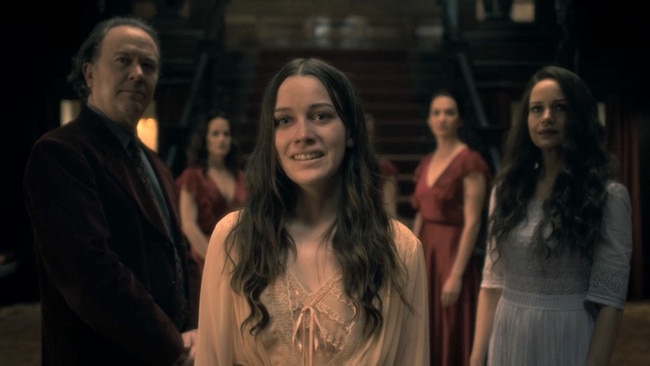
I found it confusing, perplexing and finally, irritating. As I say it’s not a genre I’m particularly fond of and I just didn’t have the patience to unravel a totally confusing plot and hang in with a bunch of characters about whom I cared not a jot. I didn’t find Flanagan’s adaptation all that compelling, though it’s proved a hugely successful series for the streamer with its cliffhangers, sensationalism and committed performances.
Early in 2019 Flanagan and his producing partner Trevor Macy entered a multi-year overall television deal with Netflix following the success of The Haunting of Hill House, the streamer’s first original horror series. The partners’ prolific seven-year union had generated six movies and a series, under the Intrepid Pictures banner. (They have since found a new home for their haunted houses and supernatural hijinks after signing a new exclusive, multi-year overall TV production deal with Amazon Studios.)
In partnership with Netflix, they developed shows, apart from the successful The Haunting of Hill House, such as The Haunting of Bly Manor, Midnight Mass and the Midnight Club. It was an association that became known industrially as the “Flanaverse”, the horror Auteur a major contributor to the streamer.
Flanagan hangs his horror narratives largely on classic literary horror stories – renewing them and creatively revitalising them as catalysts for vastly expanded contemporary stories. For him the genre provides a reflection of our societal fears, in his case an opportunity to deal the enduring effects of trauma, especially stemming from a problematic childhood.
“I really like playing with fractured families,” he says.
His own childhood took place in a healthy nuclear family, and he never had to deal with loss or grief growing up. “I associate a family as the safest place in the world,” he says. “So when it comes to things that scare me, introducing instability and tension into where you’re supposed to be the safest really strikes a chord with me.”
The horror genre for Flanagan is most exciting and unstoppable when it’s viewed as a kind of metaphorical exploration. “It’s the safe place that we, as a culture, can deal with things that upset and frighten us – the darker side of our nature. For whatever reason, I think the family is where that battleground is for me.”
His latest and final for Netflix is The Fall Of The House of Usher, a baroque, gothic melodrama, made in a distinctive visual style, full of literary allusions and references. It’s a modern reimagining – that expression again – of Edgar Allan Poe’s 19th-century poems and short stories. It’s enough to turn me into an instant Flanagan fan and is a wonderfully macabre mystery made with passionate respect for his source material.
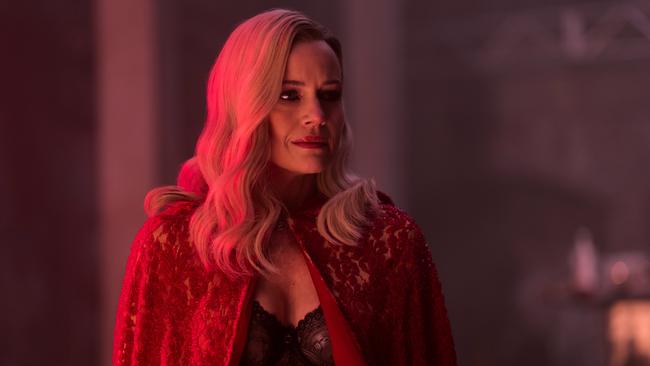
Poe, the creator of the detective story, published some of the most radically terrifying, as well as eerily humorous – something Flanagan delights in, too – short narratives in literary history.
But the series also references other works by Poe, apart from the central story of a decaying building and a degenerate family. There are ravens galore bringing their connotation of death and the everlasting presence of grief. Along with The Pit and the Pendulum, The Tell-Tale Heart, and The Cask of Amontillado.
Let’s take a breath.
It’s all weirdly complex, the references really requiring a Poe compendium to fully appreciate the wrought narrative centred on the obscenely wealthy Usher family, led by brother-sister duo Roderick (Bruce Greenwood) and Madeline (Mary McDonnell), and their drug company, Fortunato Pharmaceuticals. Their insidious star product is an opioid, a drug that kills people by slowing the rate and depth of breathing, having led to hundreds of thousands of deaths.
But according to the family, who have benefited enormously of course, the drug isn’t addictive when used as directed. This is what the real life Sackler family claimed, having as Time said, “built an empire on pain” – Flanagan’s erstwhile subject – through sales of its blockbuster drug OxyContin. (It’s estimated the Sackler’s Purdue Pharma caused the opioid epidemic in the US which has killed more than 450,000 people in the past two decades.)
Flanagan rather proudly places his series in the tradition of the “giallo all’italiana” genre in Italian film, that florid combination of “whodunit” and “slasher” murder mysteries with the gratuitous violence and gore of horror movies. Originating in the late 1920s, it relates back to the yellow-covered paperbacks published by Italy’s largest publisher, Mondadori – stories of horror, sexploitation, and crime – which became known as “giallo”, because of their yellow covers.
“It’s wild. It is colourful and dark and blood-soaked and wicked and funny, and aggressive and scary and hilarious”, Flanagan said of The Fall of the House of Usher.
“I’ve never gotten to work on anything like it. We left everything on the field with it, and it’s just bombastic fun.”
As I say, Flanagan hooked me with not just the witty, if somewhat daunting, use of Poe but his compelling combination of grisliness, sometimes strangely comic violence, the extremes of gothic mystification, and the way he so cinematically deals with Poe’s sense of the unaccountable, the paranormal hallucinations.
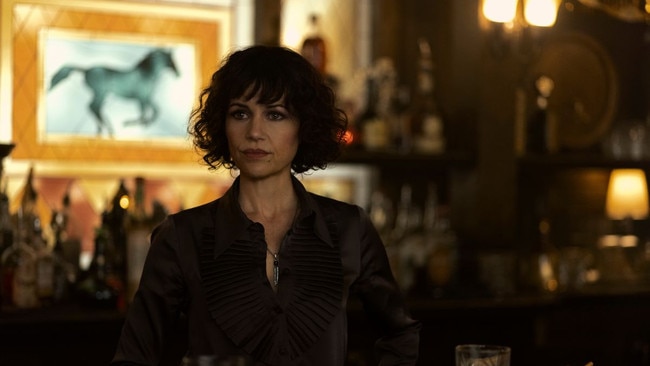
The first episode is a great set-up, shot in a beguilingly over-the-top fashion by cinematographer Michael Fimognari, Flanagan’s long-time collaborator and obviously well attuned to the director’s eclectic world of references, his creative language and process. He uses many unbroken shots, complex walk-and-talk sequences and obviously delights in the at times unearthly imagery.
The episode, “A Midnight Dreary” is named after the opening line from Poe’s The Raven and begins with a funeral as the last of Roderick’s children are morbidly celebrated in an incoherent eulogy spun together from various Poe texts, all his six offspring having recently departed. Their lives had all reached the heights of depravity and debauchery, karma was due, the Usher bloodlines taken out.
We also see high in the church’s balcony where the foreboding figure of a woman, wearing a black raven-esque mask, silently observes. She turns out to be Verna – an anagram for Raven – played by Carla Gugino, a familiar Flanagan face, here a kind of shapeshifter morphing into different characters, an executor of fate.
The despairing patriarch then summons assistant US lawyer C. Auguste Dupin to his crumbling childhood house, a “time-eaten and grotesque mansion” to deliver his confession. (Dupin is named for Poe’s great detective, who emerged to solve The Murders In The Rue Morgue in 1841, the first of crime literature’s investigators.) Dupin is played by a deliciously deadpan Carl Lumbly, the early scenes between him and Greenwood have just the right sense of heightened reality as a gothic fantasy plays out around them.
Then we travel though time as we see how the Ushers, Roderick (played by Zach Gilford in the earlier timeline) and his sister, Madeline, (Willa Fitzgerald in the past), wickedly create their empire, and how and why Roderick’s despicable children die. And how it all dates back to a serendipitous meeting with a barmaid on the fateful night between 1979 and 1980.
It’s all luridly over-the-top, fantastical, though ordered by an intense cast of very good actors, and in the end highly enjoyable. Though as I watched I was aware of Stephen King’s notion that the horror story deliberately appeals to all that is worst in us. “It is morbidity unchained, our most base instincts let free, our nastiest fantasies realised … and it all happens, fittingly enough, in the dark.”
The Fall Of The House Of Usher is streaming on Netflix.





